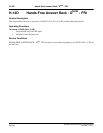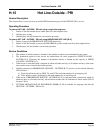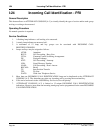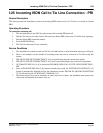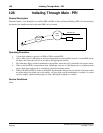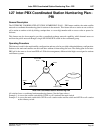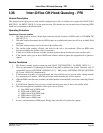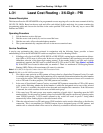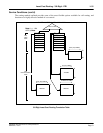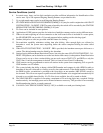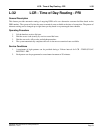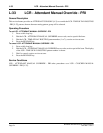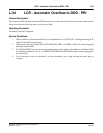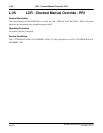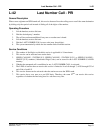
NEAX2400 IPX ISDN Features and Specifications
Page 70
NDA-24311, Issue 1
L-31 Least Cost Routing - 3/6-Digit - PRI
L-31 Least Cost Routing - 3/6-Digit - PRI
General Description
This feature allows the NEAX2400 IPX to be programmed to route outgoing calls over the most economical facility
(WATS, FX, DDD). Based on the area code and office code dialed (6-digit analyzing), the system examines the
programming tables and chooses the facilities in the order specified. This service is the only way to access PRI
interface into ISDN.
Operating Procedure
1. Lift the handset; receive dial tone.
2. Dial the access code (usually 9); receive second dial tone.
3. Dial the area code, office code and telephone number.
4. The system automatically completes the call via the most economical route.
Service Conditions
A step-by-step explanation that, when reviewed in conjunction with the following figure, provides a clearer
understanding of how the NEAX2400 IPX switch accomplishes Least Cost Routing follows:
1. If dialing a toll or local call (NPA-NXX-XXXX or NXX-XXXX), routing begins with translation of three-
digit (NPA or NXX) area or office code. In the case of specific numbers, this translation can result in the
immediate selection of the three-digit routing patterns. If the number dialed is an NPA and six-digit
translation is required, the NXX code is verified in the SCC (XX) or the FX (XX) Table (Note 1 and Note
2). If the NXX is not located in either table, see number 3. There is a maximum of 256 Outgoing Pattern
Routing (OPR) Tables with a maximum of 8 routes for selection.
Note 1: SCC (XX) is the Special Common Carrier NXX Translation Table.
Note 2: FX (XX) is the FX NXX Translation Table.
2. First choice route option in an NPA pattern will most often be a Specialized Common Carrier. If a trunk
is available in this group, further digit translation will be required to determine whether the called number
is served by the carrier. NXX digit translation will also be required in instances where a call is routed over
a tie or FX trunk. For these purposes, 256 NXX patterns are available.
3. In the case of Specialized Common Carriers, associated NXX patterns return either a YES or NO answer
to the switch, indicating whether the dialed number is within the designated service area of the selected
SCC. If service is available, the switch seizes the trunk and completes the connection. If the NO answer
is returned, the switch searches for the next available trunk group.
4. Calls routed over FX trunk groups may require outpulsing of prefix digit 1, depending upon the NXX
number dialed. For this purpose, another group of associated NXX patterns can be used, operating on the
same YES/NO principle. A YES answer returned to the switch will result in prefix 1 being added
automatically before sending digits to the called central office.
5. When the selected route is an FX trunk group, NXX translation can be used to either allow or disallow the
connection. This is accomplished via YES/NO answer from a designated group of NXX patterns, and
enables calls to selected central office areas to be effectively restricted to the most economical routes.



